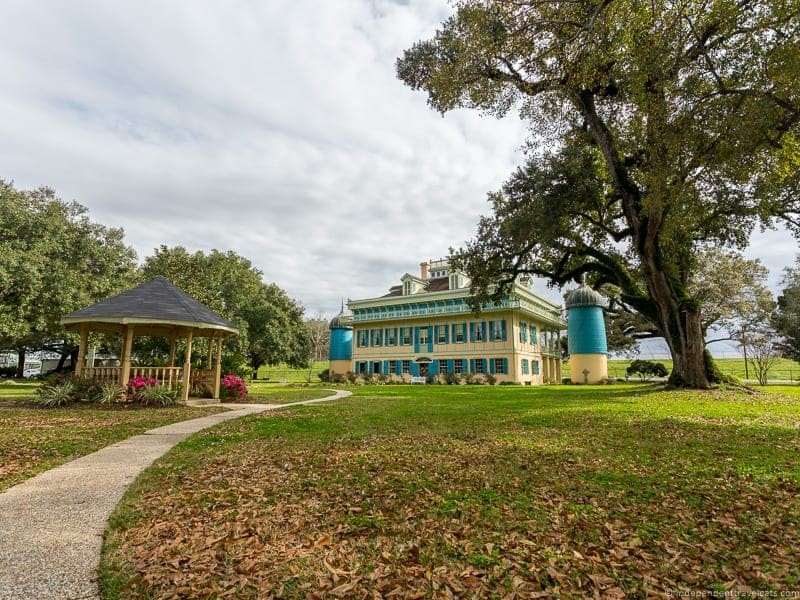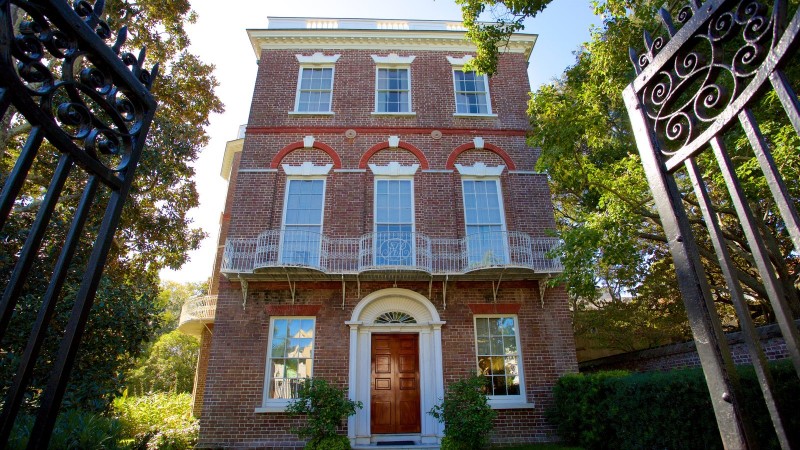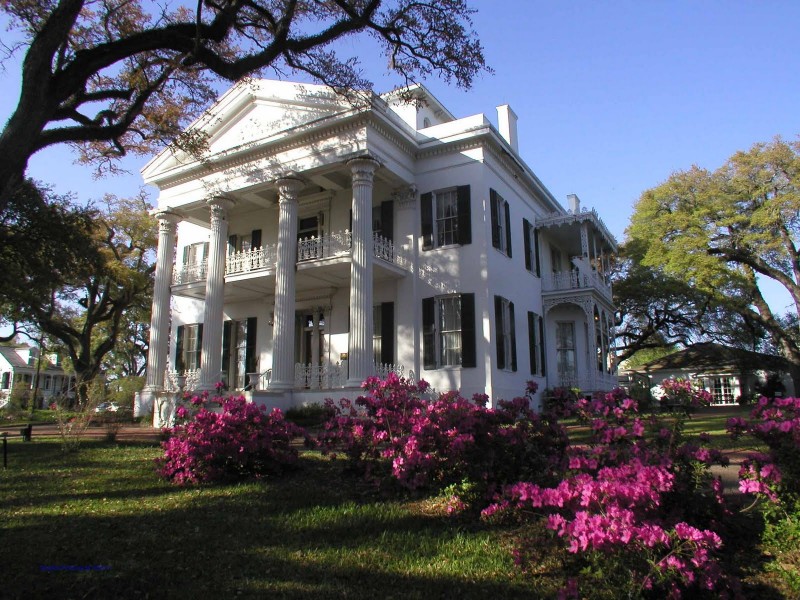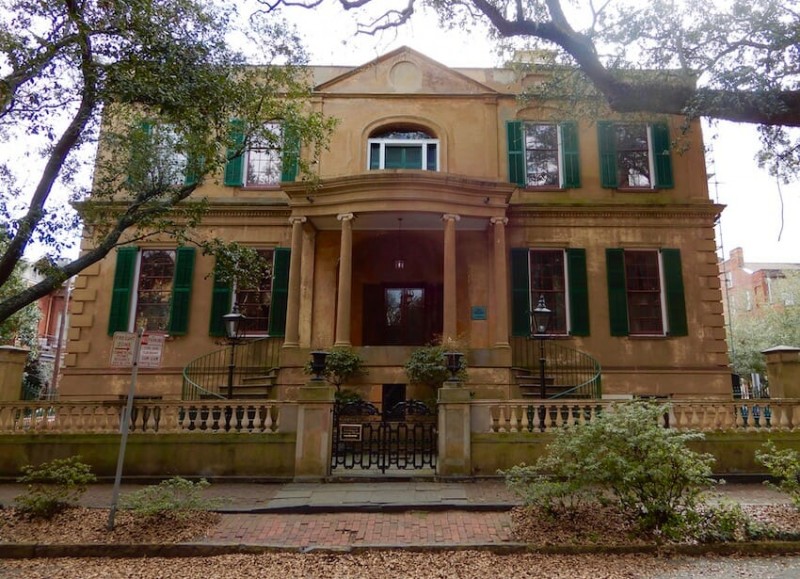The South is known for many things, like our accents, food, hospitality and heritage. One piece of this heritage is seen in the many preserved Antebellum homes and mansions. While you may be familiar with the many Antebellum homes in the Middle Tennessee area, like the Belle Meade Plantation, there’s many more of these historic pieces of architecture throughout the South. Here are five of the most well-known houses throughout the south.
1San Francisco Plantation – Garyville, Lousiana

Originally designed and built in 1827 by Elisée Rillieux, a free man of color and a smart visionary, the house was sold just three years later to Edmond Bozonier Marmillion and his partner Eugène Lartigue for the enormous sum of $100,000 dollars, which was an estimated $50,000 dollar profit.
Throughout Edmond’s life of owning the house, he sought to establish a professional sugar production. He was largely in debt from day one but continued to acquire slaves and purchase surrounding land. The economic upturn of the 1850s made the plantation successful, but only after his wife and 6 of his eight children died from tuberculosis. In order to provide for his remaining sons, he began building the plantation home with hired builders and 12 highly skilled slaves. The home was finished in 1855, Edmond passed in 1856, and Valsin took it over and ran the plantation for the next 15 years through the Civil War.
The house would change hands over the years and eventually be renamed in 1879 to the name it’s known by today, San Francisco. Today the San Francisco Plantation remains a major attraction in Louisiana being visited annually by over 100,000 people.
2Nathaniel Russell House – Charleston, South Carolina

Built by Nathaniel Russell, a Charleston merchant, the house cost $80,000 to build, at a time when the average value of a home was $262. The home’s graceful, free-flying, three-story staircase is an architectural marvel with each cantilevered step supporting the one above and below it. The graceful interiors with elaborate plasterwork ornamentation, geometrically shaped rooms, formal gardens and collection of 18th-century decorative and fine art speak to the wealth of Charleston’s elite in the early days of the American Republic.
Restored to its original splendor using forensic analysis and cutting-edge conservation technology by the curatorial staff of Historic Charleston Foundation, they sought to replicate the finishes, fixtures, and textiles appropriate for the 200-year old townhouse. Because restoration is an ongoing process, visitors have the opportunity to see and learn about the meticulous care, craft, and consideration that goes into every detail.
An exhibit in the original kitchen of the house features archaeological artifacts, educational panels, and stories about the 18 enslaved Africans that lived on and maintained the property during the Russell occupancy. It shows how integral to the history of the house and family that they were.
3Stanton Hall – Natchez, Mississippi

Frederick Stanton began building his dream house in 1857 as a palatial Greek Revival style residence in the heart of Natchez. Stanton’s home occupied an entire city block and cost over $83,000 before it was even furnished. Many of the ornate detail inside and out was imported from New York, Philadelphia, and even France. The house was completed only months before Stanton’s death in 1859 and was occupied by Union troops during the Civil War.
The living family remained in residence until 1894, at which point the building was transformed into the Stanton College for Young Ladies and rechristened Stanton Hall. In 1938, the Pilgrimage Garden Club purchased and restored Stanton Hall to its former antebellum splendor.
The tours of the house are roughly 30 minutes and highlight the history and the heritage of house, with most of the house transformed back into the residence that Frederick had created. The house offers a unique history and is one of the few that still exist in Mississippi and Louisiana after all the flooding of Hurricane Katrina.
4Long Branch Farm – Millwood, Virginia

With land passed down from ancestors, Robert Carter Burwell, utilizing the labor of enslaved workers, started a wheat plantation around 1788. About 20 years later, he began to construct a mansion with the help of a local builder-architect. Burwell fell fatally ill while serving in the military during the War of 1812 and passed in 1813. The property passed into ownership of his sister Sarah and husband, Philip Nelson, who eventually ran a school for girls along with the wheat plantation during their residence to go along with the boys’ school that was opened by their son just a little further up the road.
Philip’s ownership was full of difficulties as he struggled to make Long Branch profitable, and by the early 1840s, he was forced to sell to his nephew, Hugh Mortimer Nelson. During the Civil War, despite sympathizing with the Union, Hugh sided with his state and fought for the confederacy. He was severely wounded during the Seven Days’ Campaign of the Civil War, June 25 – July 1, 1862, and ultimately died of infection a little over a month later in August of the same year.
Following Hugh’s death, the Nelson family struggled to maintain ownership of the property but ultimately held on to the house until the 1950s though they were unable to do much to the house, meaning it remained remarkably unchanged from the 1860s until 1951. After the death of Sallie Nelson in 1951, the house was sold and passed through several owners until acquired at an auction in 1986 by Harry Z. Isaacs. In 1990, just before Isaacs’ death, he created the Isaacs Foundation which preserves, maintains, and operates the farm for charitable purposes. This foundation allows the house to remain as a part of the community and opens it up for tours and other events for the community today.
5Owens-Thomas House – Savannah, Georgia

The Owen-Thomas House was originally designed by English architect, William Jay, and originally built for Richard Richardson, a Bermuda-born banker and cotton merchant. Richardson suffered financial setbacks a short while after the home was completed and lost it to the Bank of the United States three years later.
Mary Maxwell took ownership of the house and operated an elegant lodging house here for 8 years before congressman, lawyer and one-time Savannah Mayor George Welshman Owens purchased the home in 1830 for $10,000. Owens moved in with his wife, Sarah, six children, and nine slaves. By 1840, there were 14 enslaved people including Emma and Kate, the enslaved nannies tasked with raising the Owens’ children; Diane, the enslaved cook, who worked to provide meals for everyone in the home; and Fanny, an enslaved child.
The Owens-Thomas House slave quarters is complete with the nation’s largest expanse of slave-applied haint blue paint, made from indigo and thought to ward off evil spirits. The Owens-Thomas house remained in the Owens family until 1951 when Owens’ granddaughter, Margaret Thomas, bequeathed it to Savannah’s art museum, the Telfair Academy of Arts and Sciences.
The tours highlight the history of the slaves’ intact carriage house as well as provides an exploration of the home’s remarkable features, including Savannah’s earliest system of indoor plumbing, an indoor bridge, and the balcony from which the Marquis de Lafayette is said to have addressed a crowd of locals in 1825. It also shares how each room was used in that time and by whom.
This article was brought to you by Infiniti of Cool Springs, driving your next roadtrip adventure. Infiniti of Cool Springs offers new and pre-owned vehicles. Infiniti of Cool Springs is located at 211 Comtide Ct., Franklin, TN 37067.
















